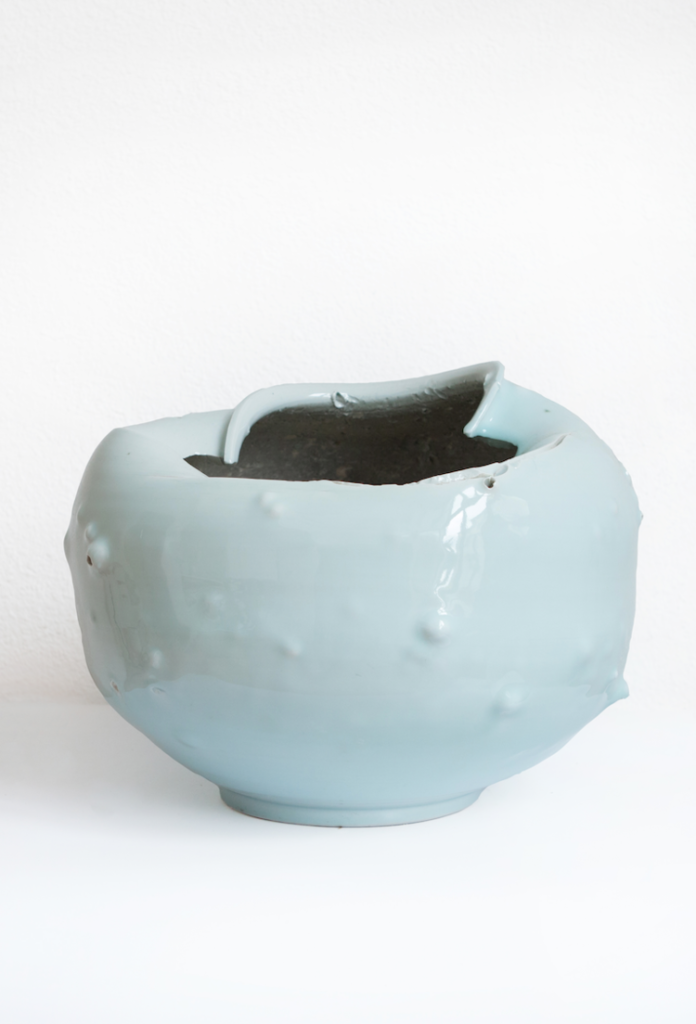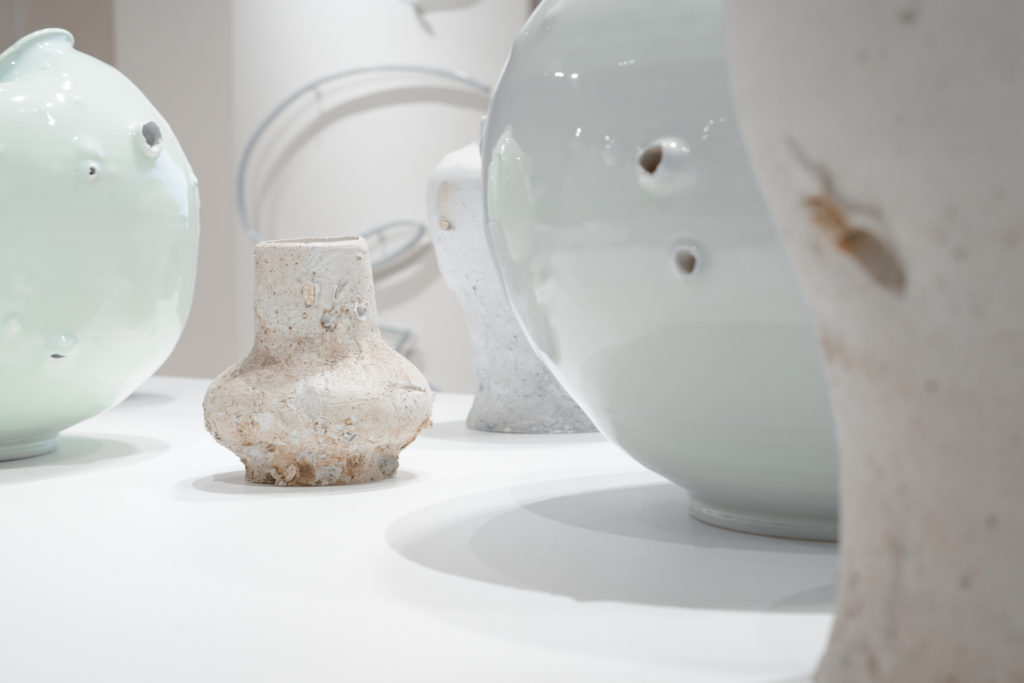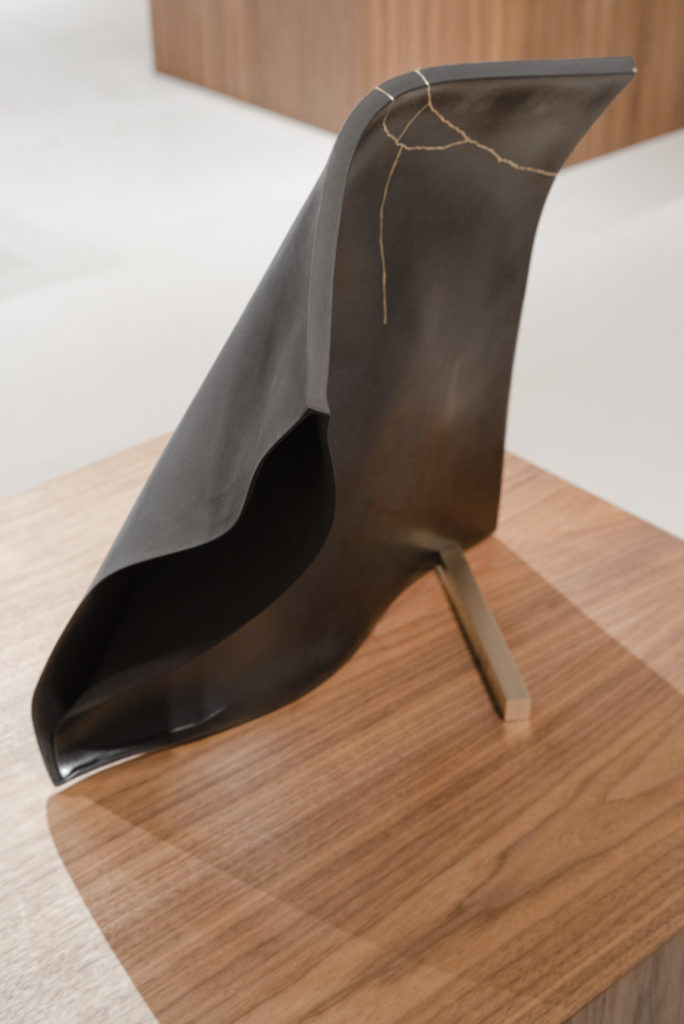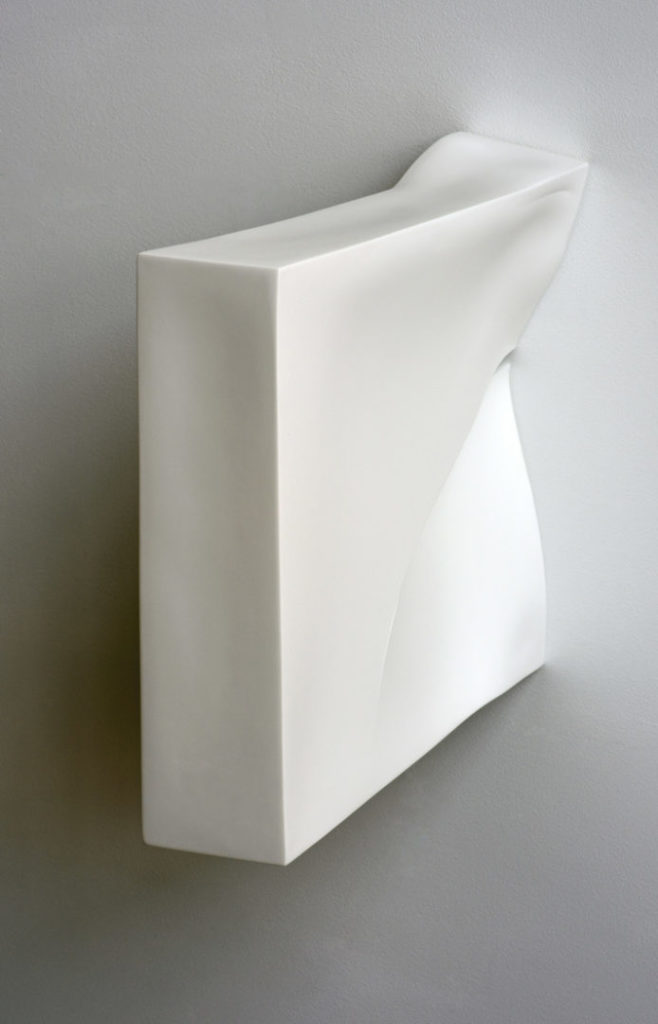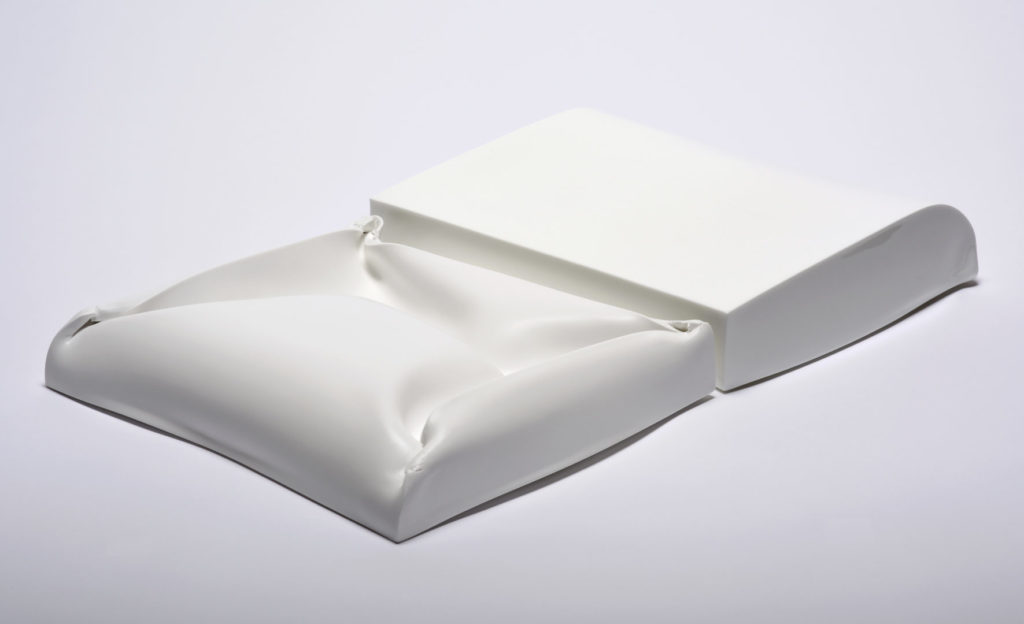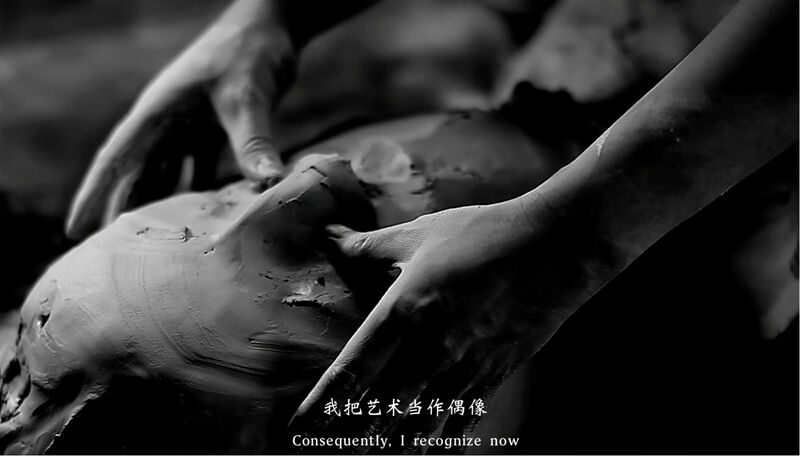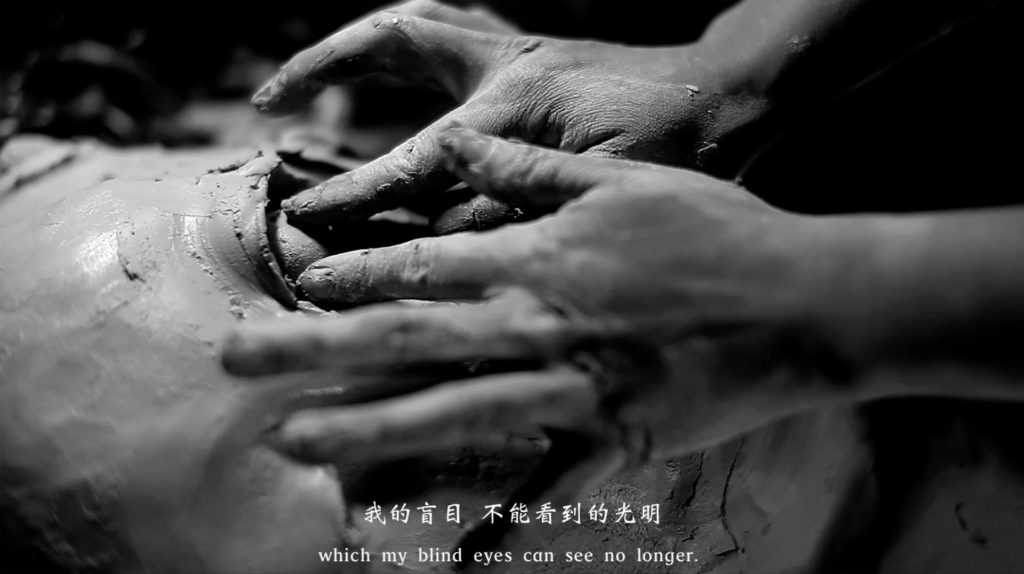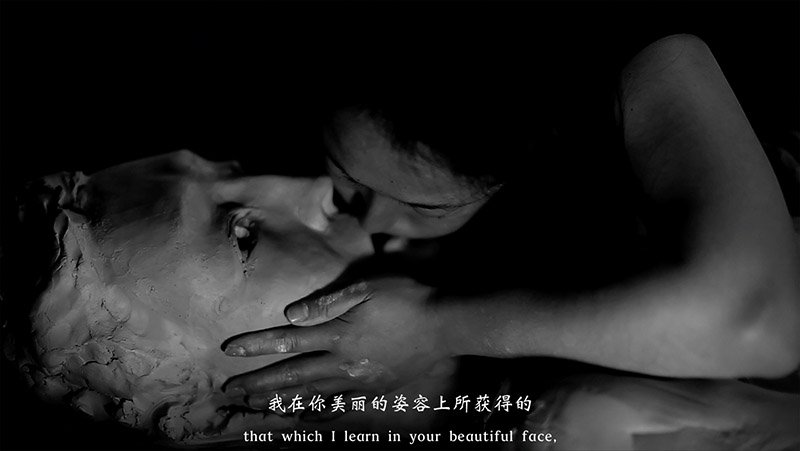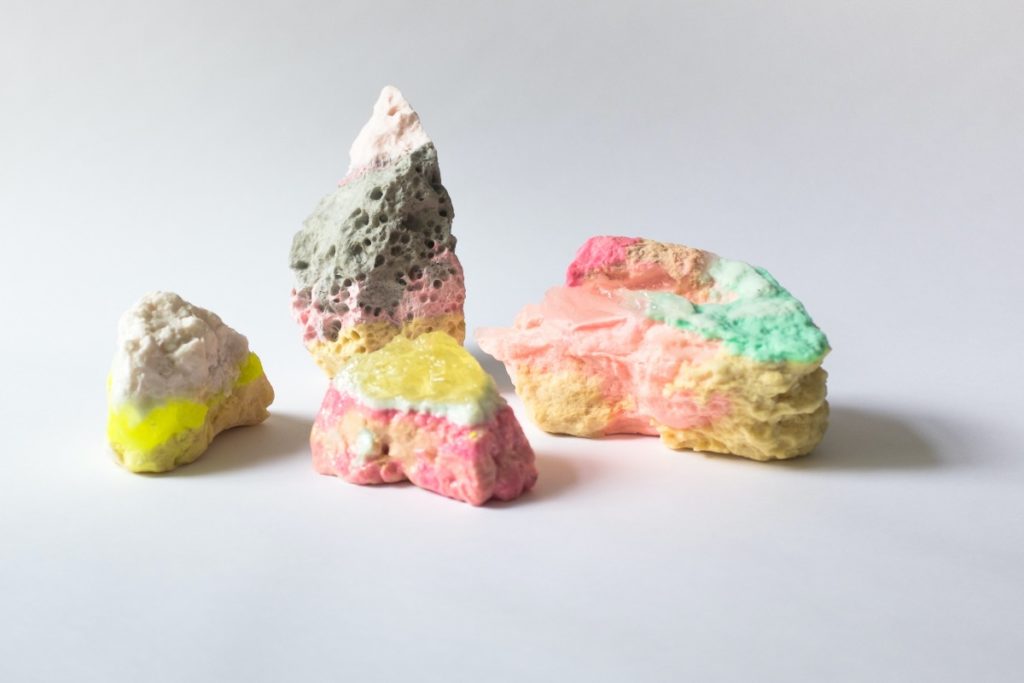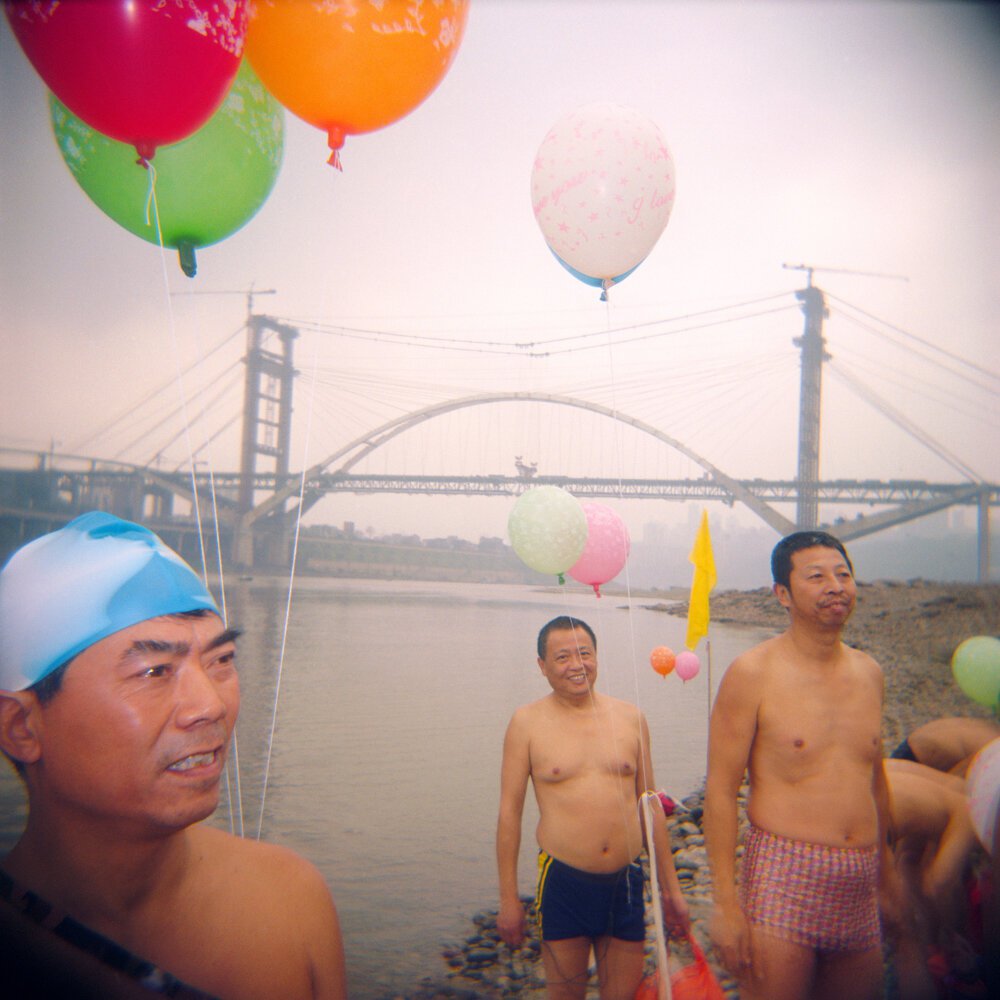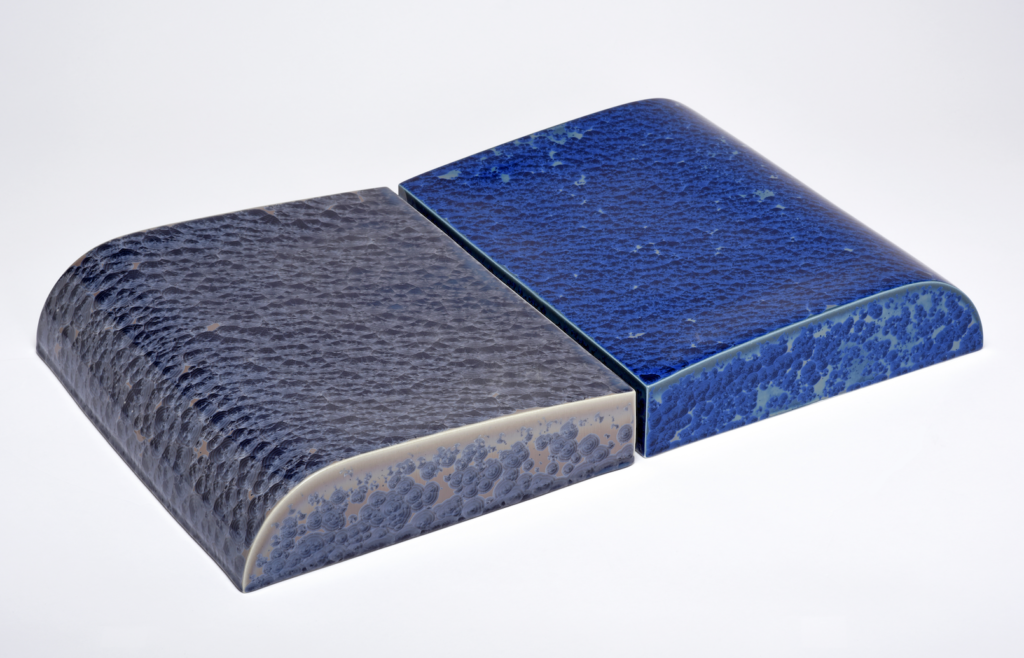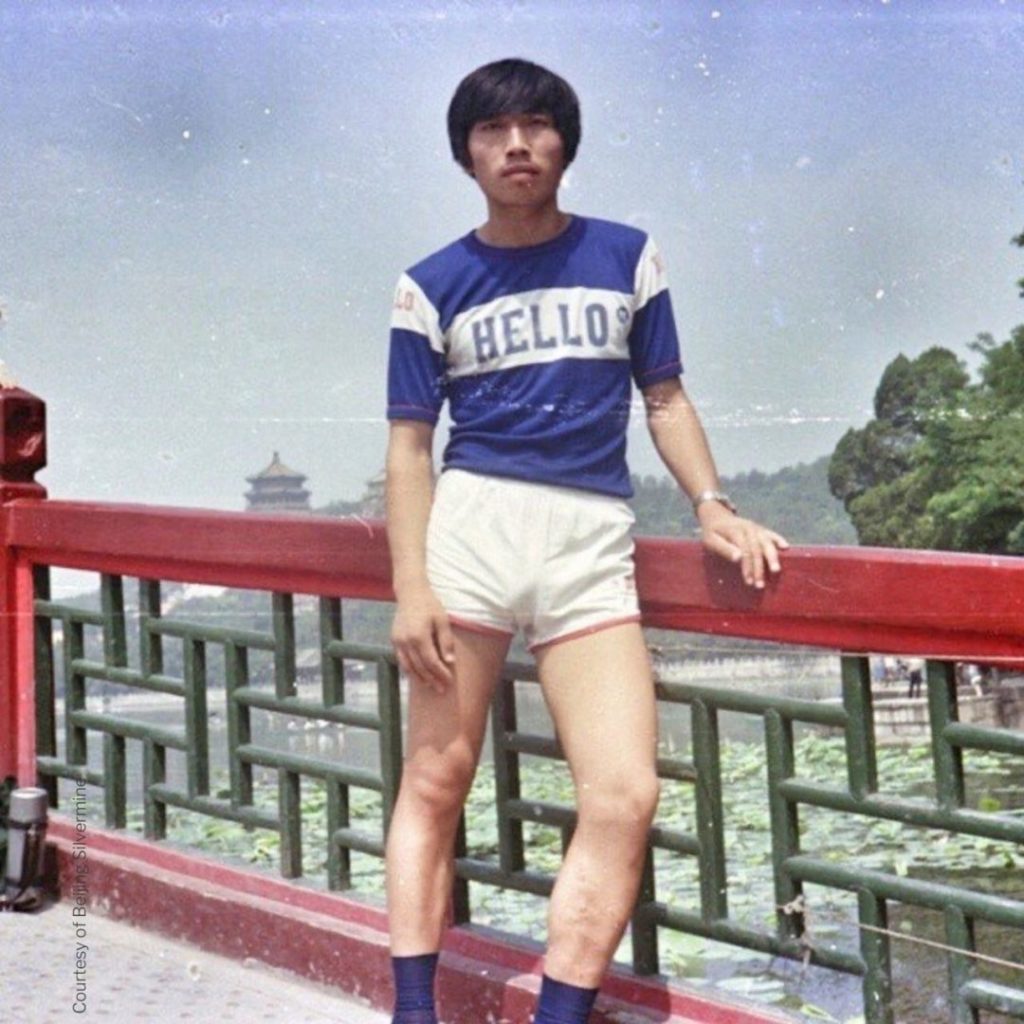Louise Frydman (born in 1989) began by composing works in light and delicate white paper. In 2015, she turned to ceramics as she sought, on one hand, the immediacy and sensuality of the material and its durability on the other. “My work is an exploration of Nature in all its forms. I model clay and give birth to delicate pieces which I wrap in powdery white that catches light making its lines vibrant”.
The artist treats the material like paper as they share the same white matt aspect and finesse. On one hand, she creates stoneware or earthenware sculptures, and on the other, artworks in biscuit porcelain – like those presented at ICICLE’s exhibition. “I have incorporated porcelain into my practice recently. I model the clay by stretching it with my hands. This gesture is an extension of my work on paper. I make small elements, ‘petals’ or ‘bubbles’, which I assemble to create compositions in mobile forms, on coated wood panels or on paper. It is a slow and contemplative process. “
Working in white monochrome allows the artist to focus on form and its interplay with lights and movements. “White allows me to concentrate on complex forms, where the colour adds no further effects. I like to create doubt in the viewers’ mind regarding the materials I used. It is difficult to determine at first glance if it is ceramic, plaster, or paper. There is magic in the purity of whiteness.”
In a subtle balance between power and finesse, between solid materials and fragile forms, Louise Frydman lets herself be guided by the material and its inherent properties to create works that are neither sculptures nor paintings, ceramics that seem as light as paper. Like “L’Envolée” and the “Bubbles” series (“Bubbles III” and “Bubbles IV” were created especially for the exhibition), the hands of the artist are visible everywhere, and yet her sculptures seem to come from nature, like organic forms: petals, leaves, trunks, shoots…. “By creating a work of art, one extends something of oneself, something that stems from the hand. I am touched to see how the imprint of hand lines resonates with the lines seen on a leaf. Skin resonates with petal. These associations amaze me. “
Discover Louise Frydman’s work on her website




